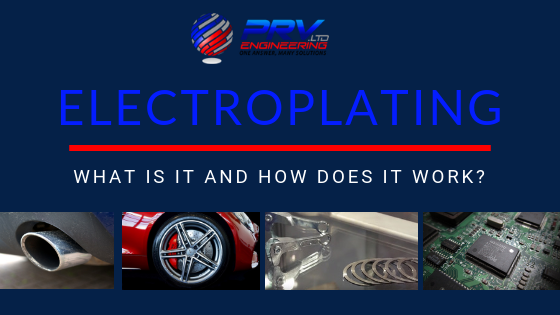
While there is no magic trick to change common chemical elements into rare and valuable ones, electroplating is as close as it gets. Electroplating is similar to electrolysis which is the opposite of the process batteries use to produce electric currents. The earliest form, which became the modern electroplating process, occurred in the early 19th century.
The development of bigger electric generators meant higher currents which drastically improved the process. Advancements in industrial and manufacturing practices over the past two centuries have changed this process considerably.
While some of you may already know what electroplating is, what about how it works? Electroplating can be described as a common metal finishing or improving process used in a number of industrial applications. The process involves using electricity to coat a relatively mundane metal, like copper, with a thin layer of a more precious metal, such as gold or silver.
However, making cheap metals look expensive is just one application as electroplating offers loads of other uses. It is used to make items more resistant to rust and even to make plastic look like metal. Let’s take a closer look at what goes on behind the scenes.
How Does Electroplating Work?
Electroplating uses an electric current to reduce dissolved metal cations so that they form a thin metal coating on an electrode. It’s known as electrodeposition because the process involves depositing a thin layer of metal onto the surface of a work piece referred to as the substrate.
The anode is connected to the positive terminal and the cathode (metal to be plated) is connected to the negative terminal. Both are immersed in a solution that contains an electrolyte and connected to an external supply of direct current. When DC power is applied, the anode is oxidized.
Metal atoms dissolve in the electrolyte solution and ions are reduced at the cathode forming a coating. The current through the circuit must be adjusted so that the rate of the anode being dissolved equals the rate at which the cathode is plated.
Different metals are coated using electroplating and preparing the right electrolyte is vital to plating quality. Commonly a single metallic element, not an alloy although some alloys like brass and solder can be electro-deposited. The ability to cover plating uniformly is called throwing power. The better the “throwing power” the more uniform the coating.
Uses For Electroplating
Electroplating is widely used in a number of sectors for coating metal objects with a thin layer of a different metal. The added metal has a desired property the original object lacks and is primarily used to improve corrosion resistance. Chromium plating is a great example as you’ll see it on many objects including car parts, bath taps, gas burners, wheel rims among others. Other types of electroplating include copper and silver plating.
Benefits of electroplating include the following:
- Increased wear resistance
- Protect against surface abrasions
- Reduce friction
- Improve electrical conductivity (copper layer onto an electrical component)
- Prepare surfaces for better adhesion before painting or re-coating
Electroplating allows manufacturers to use inexpensive metals like steel or zinc for most of the product but can then apply different metals on the outside to improve appearance, protection and other required properties.
Electroplating and Aesthetics
Some metals are considered more attractive and valuable than others with gold and silver being the most obvious examples. The challenge that companies face is that gold and silver are rare and rather expensive. A thin layer of gold or silver can coat a less valuable metal and subsequently turns the final product into a beautifully crafted, aesthetically pleasing item. Thin layers of chromium are commonly used on home appliances and even automobiles to create a shiny appearance.
Electroplating and Conductivity
Gold and silver are excellent electricity conductors but as we’ve established, they are expensive. With the help of electroplating techniques, manufacturers can incorporate very small amounts of these precious, highly conductive metals into electronic components and integrated circuit boards. Silver and Tin are essential finishes for components that are designed to carry heavy electrical currents. A perfect example of this is Busbars. Cell phones, tablets, computers and other electronic devices all use electroplating techniques in their circuits.
Electroplating and Protection
Electroplating is also ideal for protecting surfaces as it covers them with a thin layer of metal. This results in the final product/component being more corrosion-resistant than the original material. Items made from tin and zinc are often plated to give them a protective outer later. Food containers are a good example as electroplating makes them more resistant to corrosion. Many everyday items made from iron are also plated with zinc using a process called, galvanization, for the same reason.
There is no better way to control the quality of the finish than doing it yourself. PRV Engineering invested in a tin and silver plating facility which has enabled us to do just that. We manufacture products which require expert skills and several specialist processes. Get in touch if you need help with your project or if you have any questions about the available plating finishes, busbars or any of our other products and services.
This site uses Akismet to reduce spam. Learn how your comment data is processed.


 Mail:
Mail: 




Leave a Comments